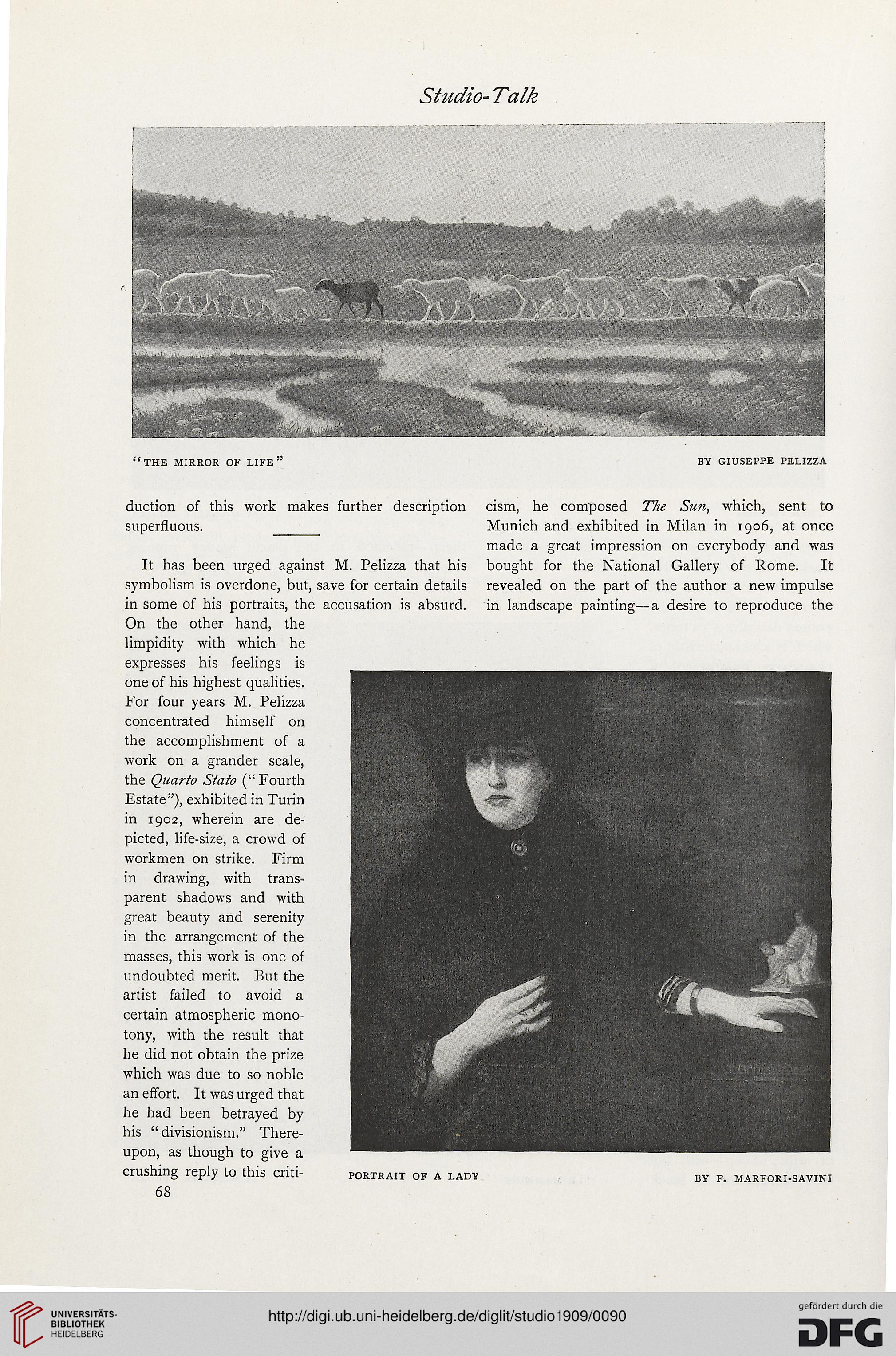Studio-Talk
“THE MIRROR OF life” by GIUSEPPE PELIZZA
duction of this work makes further description
superfluous.
It has been urged against M. Pelizza that his
symbolism is overdone, but, save for certain details
in some of his portraits, the accusation is absurd.
On the other hand, the
limpidity with which he
expresses his feelings is
one of his highest qualities.
For four years M. Pelizza
concentrated himself on
the accomplishment of a
work on a grander scale,
the Quarto Stato (“Fourth
Estate”), exhibited in Turin
in 1902, wherein are de-
picted, life-size, a crowd of
workmen on strike. Firm
in drawing, with trans-
parent shadows and with
great beauty and serenity
in the arrangement of the
masses, this work is one of
undoubted merit. But the
artist failed to avoid a
certain atmospheric mono-
tony, with the result that
he did not obtain the prize
which was due to so noble
an effort. It was urged that
he had been betrayed by
his “ divisionism.” There-
upon, as though to give a
crushing reply to this criti-
68
cism, he composed The Sun, which, sent to
Munich and exhibited in Milan in 1906, at once
made a great impression on everybody and was
bought for the National Gallery of Rome. It
revealed on the part of the author a new impulse
in landscape painting—a desire to reproduce the
PORTRAIT OF A LADY
BY F. MARFORI-SAVINI
“THE MIRROR OF life” by GIUSEPPE PELIZZA
duction of this work makes further description
superfluous.
It has been urged against M. Pelizza that his
symbolism is overdone, but, save for certain details
in some of his portraits, the accusation is absurd.
On the other hand, the
limpidity with which he
expresses his feelings is
one of his highest qualities.
For four years M. Pelizza
concentrated himself on
the accomplishment of a
work on a grander scale,
the Quarto Stato (“Fourth
Estate”), exhibited in Turin
in 1902, wherein are de-
picted, life-size, a crowd of
workmen on strike. Firm
in drawing, with trans-
parent shadows and with
great beauty and serenity
in the arrangement of the
masses, this work is one of
undoubted merit. But the
artist failed to avoid a
certain atmospheric mono-
tony, with the result that
he did not obtain the prize
which was due to so noble
an effort. It was urged that
he had been betrayed by
his “ divisionism.” There-
upon, as though to give a
crushing reply to this criti-
68
cism, he composed The Sun, which, sent to
Munich and exhibited in Milan in 1906, at once
made a great impression on everybody and was
bought for the National Gallery of Rome. It
revealed on the part of the author a new impulse
in landscape painting—a desire to reproduce the
PORTRAIT OF A LADY
BY F. MARFORI-SAVINI




